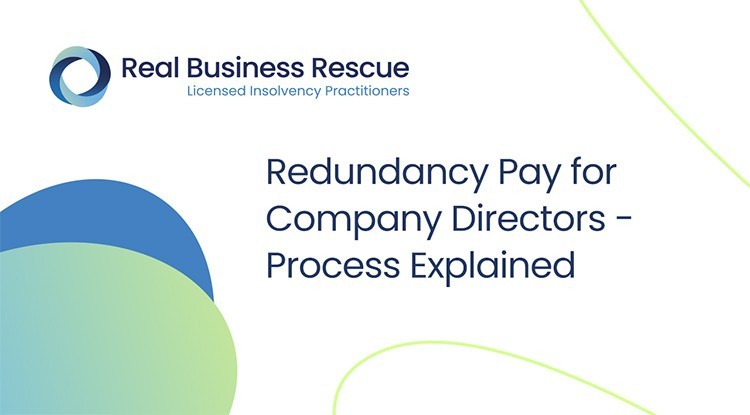Examining the Interaction Between Business Redundancy and Organizational Flexibility for Future Development
In the vibrant landscape of today's company globe, the intricate relationship in between company redundancy and organizational flexibility arises as a crucial variable for continual development and success. Companies frequently deal with the obstacle of striking a fragile equilibrium in between maintaining a level of redundancy to mitigate dangers and promoting adaptability to respond quickly to the ever-evolving market demands.
Significance of Firm Redundancy
Company redundancy is a critical component that enhances organizational resilience and alleviates operational dangers. By integrating redundancy actions within the organizational structure, companies can much better stand up to unpredicted disruptions and variations in the organization atmosphere. Redundancy works as a strategic barrier, enabling firms to adapt and respond effectively to unforeseen challenges without endangering essential operations.
One trick element of the significance of firm redundancy is its role in guaranteeing connection throughout times of situation. When confronted with sudden modifications or emergencies, repetitive systems, resources, or personnel can tip in to keep vital features and avoid prevalent disturbances. This continuity not only safeguards the company's credibility and customer depend on yet additionally lessens financial losses and operational downtime.

Methods for Business Flexibility

One more essential method is investing in innovation and framework that can sustain versatility and scalability. Implementing electronic tools, automation, and data analytics can simplify procedures, boost performance, and give useful insights for informed decision-making. In addition, developing versatile organizational structures that permit for quick modifications to market dynamics and customer demands is necessary for remaining competitive in a quickly evolving setting. By proactively recognizing potential interruptions and opportunities, organizations can proactively adjust and thrive in an ever-changing company landscape.
Balancing Redundancy and Adaptability
Attaining a harmonious equilibrium in between operational redundancy and business flexibility is vital in browsing the intricacies of a dynamic company environment. Redundancy within a firm provides a safeguard, making certain connection and security in operations. Nonetheless, an unwanted of redundancy can cause inadequacies and hinder versatility to changing market conditions. On the other hand, organizational versatility enables firms to react without delay to outside interruptions and seize new chances. Striking the best equilibrium between redundancy and versatility is a fragile procedure that requires a deep understanding of the Going Here company's objectives, sector characteristics, and threat tolerance.
To achieve this balance, companies need to perform normal assessments of their procedures to determine areas where redundancy is essential for risk mitigation and where versatility can drive development and growth. Carrying out flexible structures, promoting a culture of continuous knowing and renovation, and motivating open interaction across all levels of the organization are vital approaches to integrate redundancy and versatility successfully. By lining up these 2 crucial components, business can position themselves for sustainable development and success in an ever-changing organization landscape.
Instance Research Studies on Adjustment Success
In checking out circumstances of successful business adjustment, it becomes noticeable that the interplay in between functional redundancy and adaptability is a defining variable in shaping resistant services. A DVD rental service, Netflix showed exceptional flexibility by transitioning right into a streaming platform when digitalization interfered with the industry. These situation studies published here underscore the significance of functional redundancy combined with organizational adaptability in cultivating long-term growth and competitiveness.
Structure Resilience for Future Development
Building resilience for future development needs a critical placement of operational processes with market dynamics and emerging fads. Companies should adjust to altering environments by promoting a society of versatility, technology, and continuous renovation. Strength entails not only getting better from troubles however also proactively getting ready for future challenges. One essential element of structure strength is buying durable threat monitoring strategies to mitigate prospective disruptions. This includes scenario planning, branching out supply chains, and establishing backup prepare for different backups (who pays redundancy money).
Moreover, cultivating solid connections with stakeholders, such as customers, workers, providers, and the community, is necessary for maintaining and weathering unpredictabilities depend on and support throughout stormy times. Reliable interaction and transparency play an essential role in building resilience, as they aid help with and straighten expectations collaboration in browsing unpredictabilities.
Furthermore, organizations require to focus on understanding and growth efforts to upskill employees and outfit them with the required devices to adjust to altering circumstances. By spending in their labor force, firms can enhance their versatility and agility, eventually reinforcing their durability for lasting future growth.
Final Thought

In the vibrant landscape of today's service globe, the intricate connection between company redundancy and organizational adaptability arises as an essential factor for sustained development and success. Firms usually encounter the difficulty of striking a delicate equilibrium between keeping a level of redundancy to alleviate dangers and fostering versatility to react quickly to the ever-evolving market demands.To achieve this balance, firms require to conduct regular evaluations of their operations to determine locations where redundancy is necessary for risk reduction and where adaptability can drive advancement and growth.In verdict, the interplay between business redundancy and organizational flexibility is critical for future development. Building strength with a mix of redundancy and versatility will make sure that firms are prepared for the obstacles of the future.